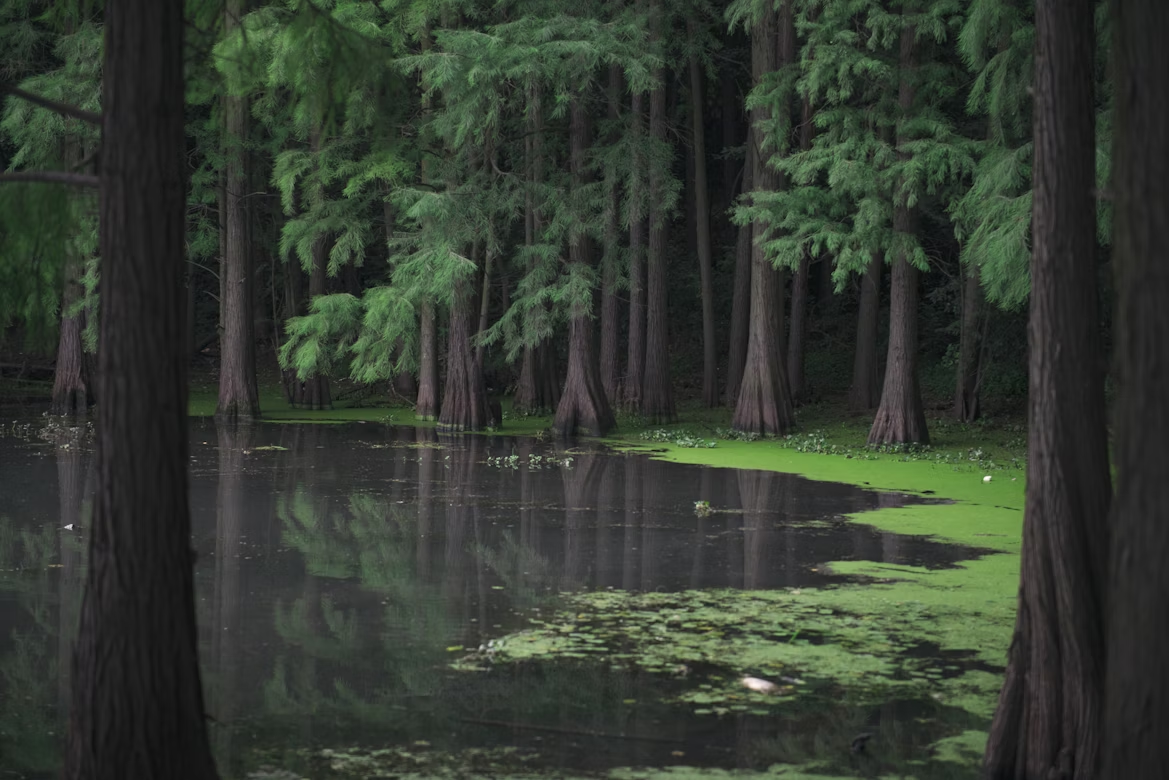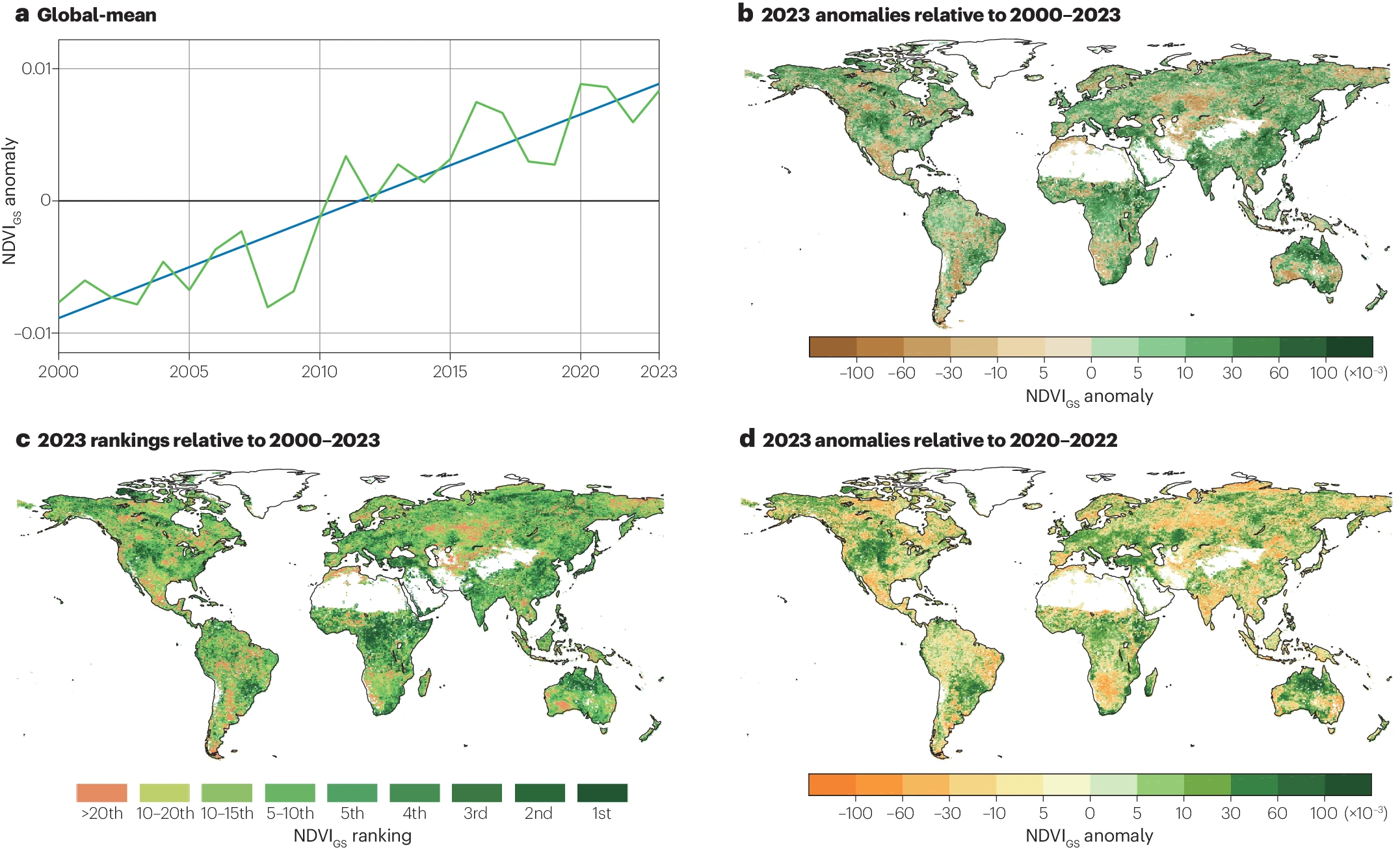Did climate chaos cultivate or constrain 2023's greenery?
Apr 11, 2024
Peking University, April 11, 2024: In the ongoing quest to track the progression of climate change, scientists frequently examine the state of our planet's vegetation — forests, grasslands, agricultural lands, and beyond. In a recent publication in Nature Reviews Earth & Environment, a research team led by Academician Piao Shilong from the College of Urban and Environmental Sciences at Peking University delved into the topic. The paper, titled "Vegetation Greenness in 2023," offers a detailed analysis of the interplay between vegetation greening and climate change.
Why it matters:
• The greening of vegetation is one of the most significant features of changes in the Earth's biosphere during the modern period of climate warming.
• Increased atmospheric carbon dioxide concentration, warming climate, and land use changes are the main drivers affecting global vegetation greening.
The bigger picture:
• Under the long-term warming trend, the intensity and frequency of extreme climate events have significantly increased, which is widely believed to be a key factor in triggering the stagnation or even reversal of the global vegetation greening trend into a browning trend.
• It is worth noting that 2023 was the hottest year on record, compounded by a strong El Niño event, which widely triggered extreme events such as heatwaves, droughts, and wildfires globally. Therefore, whether the record-breaking climate anomalies in 2023 will lead to widespread vegetation decline globally, thereby inducing unsustainable trends in global vegetation greening, is a hot topic of concern in the current academic community.
Key points:
• Their study found that the global vegetation greening trend continued in 2023, with the global vegetation greenness in 2023 ranking third highest since the beginning of this century, following only 2020 and 2021.
• While the greening trend continued into 2023, shorter-term variability modulates the long-term greening pace.
• Multiple extreme climatic events, in tandem with an El Niño event, markedly diminished vegetation greenness in many regions during 2023.
Difference of growing season vegetation greenness: a, Global-mean growing season normalized difference vegetation index (NDVIGS) anomalies relative to the 2000–2023 mean from the MOD13C2 data product. The growing season of each grid was defined following ref. The blue line depicts the greening trend from 2000 to 2023. b, 2023 NDVIGS anomalies relative to the 2000–2023 average. c, Ranking of 2023 NDVIGS anomalies relative to 2000–2023; 1st implies 2023 is the greenest year. d, 2023 NDVIGS anomalies relative to the 2020–2022 average. The global greening continued in 2023, yet the intensified browning observed in certain regions due to multiple climatic events has the potential to impact the overall greening rate.
Conclusions & Significance:
The trend was mainly attributed to significant increases in vegetation growth in the Midwest United States, Europe, northern Australia, and the Sahel region of Africa. However, compared to 2020 and 2021, due to extreme climate events such as spring cold waves, summer heatwaves, and droughts in many parts of the world, vegetation growth significantly decreased in regions such as Russia, Mexico, Canada, and the tropics.
The retrospective study of vegetation greenness in 2023 addresses the debate on whether the long-term trend of global vegetation greening will stagnate due to widespread extreme climate events globally, while emphasizing that the increasing frequency of extreme climate events under future warming trends will exacerbate the regional decline of vegetation, thereby weakening the carbon sequestration function of ecosystems.
Link to the paper: https://www.nature.com/articles/s43017-024-00543-z
Written by: Shi Xinyao
Edited by: Dennis Meng
Source: PKU News (Chinese)
Cover photo: Unsplash

